Results 1 to 8 of 8
 22Likes
22Likes
Thread: Bengall junker to 8/8 faker
-
11-17-2014, 01:59 AM #1
 Bengall junker to 8/8 faker
Bengall junker to 8/8 faker
Been a bit quiet in the workshop for last couple of weeks with long days at work and helping the daughter with the joys of moving houses on the last couple of weekends.
But I have been plodding away with this little project while I feed the dogs for about half an hour each night.
This is my recent experiment razor with several firsts applied for me.
The blade was in appalling condition but for the price of $30 I paid for it together with a very salvageable 13/16” J. Dirlam & Sons Balmoral with broken scales, I wasn’t worried about if I buggered it up so thought I would try a few new techniques.
The list of first:
- using Evapo-Rust,
- grinding a toe crack & shortening a blade
- using a 3” felt buff with grey polish compound
- using a 6” calico buff clean with not compound,
- working with Bakelite scales
- hot vinegar etching
now this 6/8 Bengall was pretty well gone & unsalvageable to look at, ( well so the seller thought but I saw it’s potential ) and hoped for the best
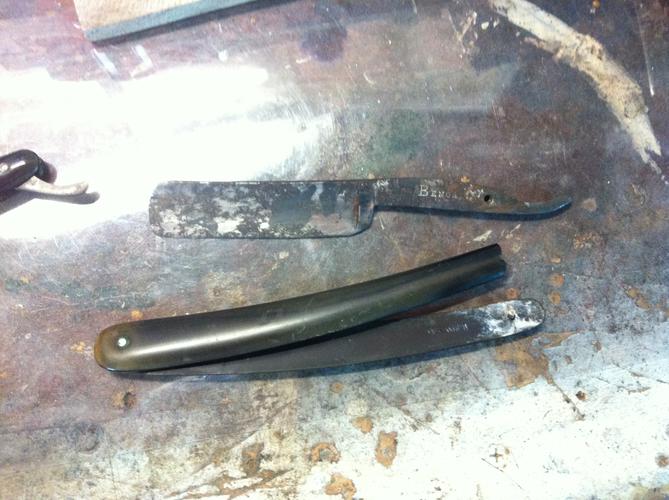
so first off was a couple of 24 hour soaks in the Evapo-Rust, with a light steel wool rub occasionally.
Surprising what a difference a good bath can make.
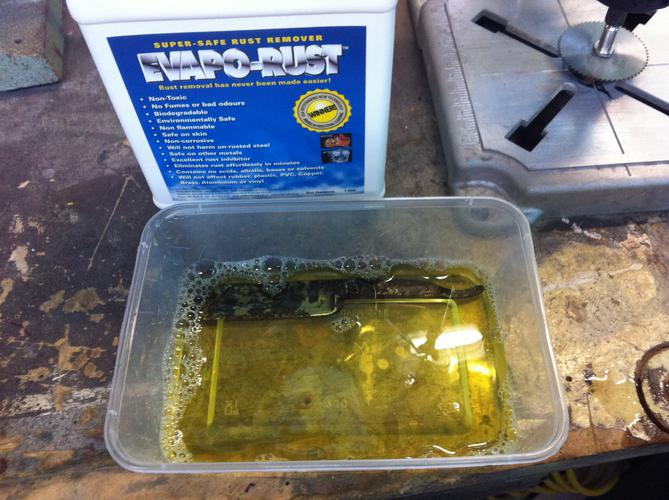
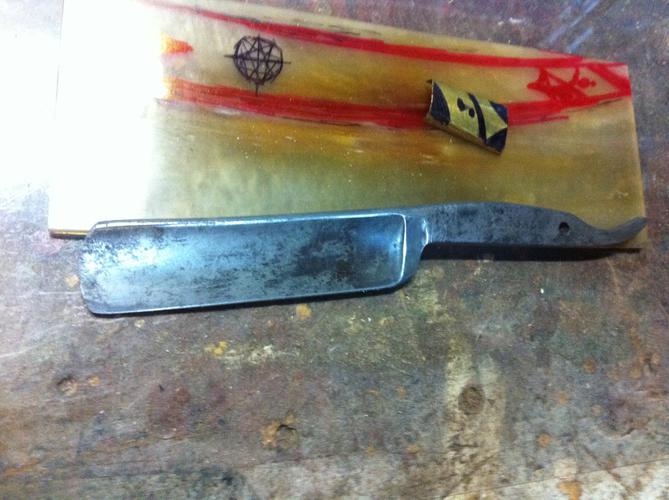
After the first bath while steel wooling I noticed a crack in the middle of the toe so decided remove it & shortened the blade about 4 to 5mm retaining the original grind shape.
Used my Dremel with a small stone bit then my bench grinder to gently do this.
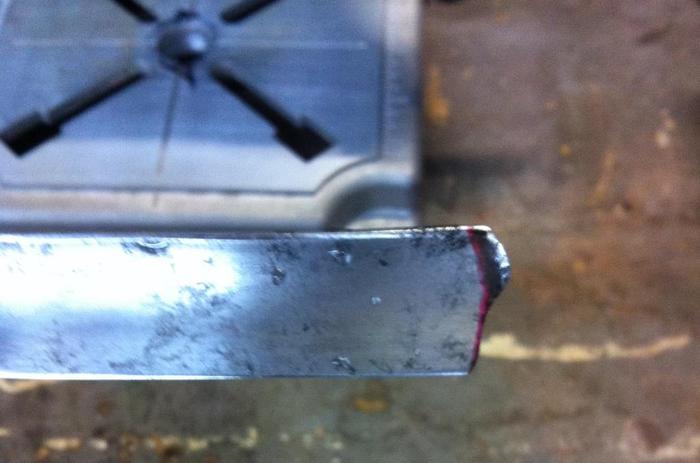
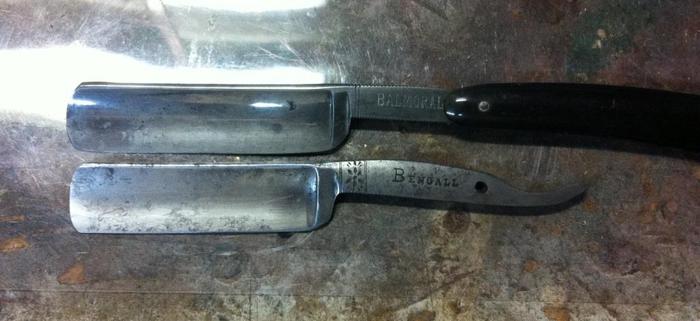
Then after shortening the blade I notice I could reclaim the original scales with the broken pivot, so while reshaping the pivot end on them discovered ( well I’m pretty sure anyway ) that they are Bakelite
And man does that stuff stink when you sand it, the horn & bone smells a whole lot better for sure, even the bride had something to say about the stink that seemed to makes it way upstairs to her.
But I think they came out pretty good anyway
So back to blade reworks
I then proceeded to polish the steel using a 3” felt buff wheel in my drill with a Chrox compound but changed to the slightly courser grey buff compound,
this was a slow process & didn’t really work as well as hoped, I think the biggest problem was the speed of the drill on high was to slow still but it did make a difference and didn’t remove any metal as such so now looking for some 4” buff wheels for the bench grinder to give it a real go.
Now the blade came out ok without using a greaseless compound or any sanding & the blade is very thin so I didn’t want to remove any more steel,
But the blade still had a bit of an uneven surface pattern left from its previously neglected life
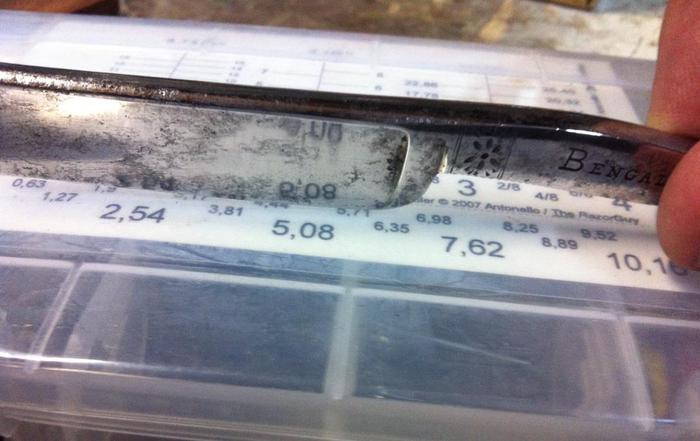
So I decided to try for an darkened patina look and out came the hot vinegar
Forgot to take pics of this as I was going but pretty well boiled the vinegar & submerged the blade in it in a test tube like glass I have, I did this several times for about half an hour each with steel wool clean up between passes
Pre-assembly everything got buffed over with the 6” calico floppy buff
Then for the final assembly I retained the original scales with wedge, pins & washers in tacked & fitted the new brass pivot pin with narrow Stainless washers
another final buffing with a coat of Ren. Wax then back on the 6" Buff again
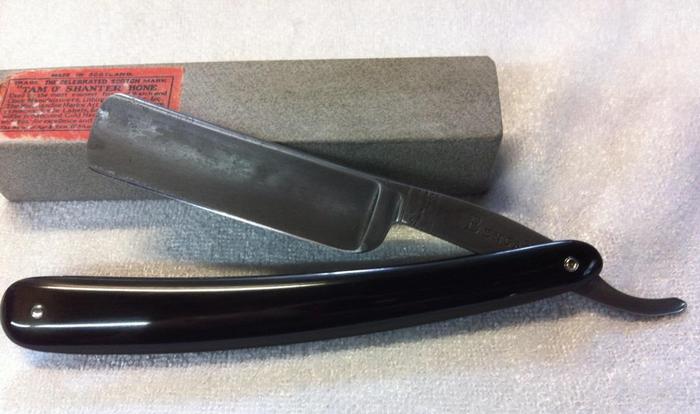
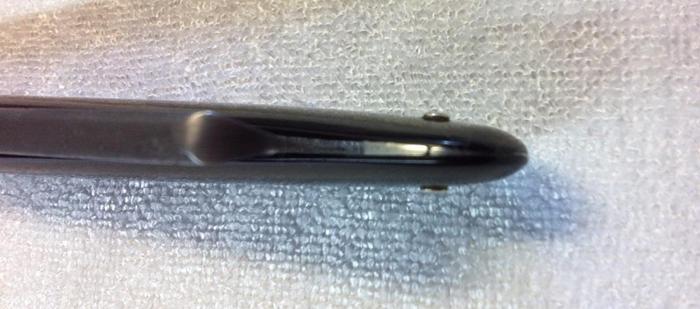
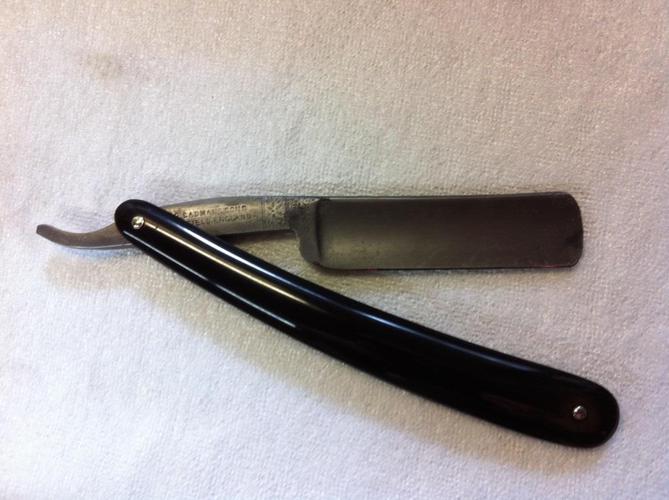
Honed in the following progressing:
Nani 1K for bevel set
Norton 4/8K – about 40 circles & X Strokes,
Nani 12k – about 40 circles & X Strokes,
Pike Swaty barbers hone – about 20 X Strokes,
paddle with 10 X Strokes on 0.3 Chrox then 0.1 Ferox
pre-clean on my felt hanging strop with about 50 laps
then finished on my Roo strop with about 60 laps on the suede back & 100 laps on the front
The blade has a nice thin bevel
Test shaved this morning
Post shower - Cold water shave
With Razor Rock Classic whipped up to spec with a EJ Best badger brush
Finished with Truefitt & Hill – Freshman after shave
Found the blade to be a very smooth shaver with lots of feed back
I would class this as a singing blade it is very thin.
Quite happy with the overall finished blade for a Junker turned 8/8” faker
8/8 faker being my term from the deceiving pics that give the shorty's a bigger blade look.
Thanks for looking
DLast edited by Substance; 11-17-2014 at 02:21 AM.
Saved,
to shave another day.
-
-
11-17-2014, 02:23 AM #2Senior Member

- Join Date
- Dec 2013
- Posts
- 262
Thanked: 41
Thanks for the write up and a look into your restoration techniques
-
The Following User Says Thank You to HardCase For This Useful Post:
Substance (11-17-2014)
-
11-17-2014, 04:13 AM #3

That's very nice mate
 ....I wouldn't have been brave enough or motivated enough to tackle that resurrection.
....I wouldn't have been brave enough or motivated enough to tackle that resurrection.
I've not used evapo-rust, but it looks like it's worth investigating further !!http://straightrazorplace.com/workshop/18504-welcome-workshop-how-do-i-where-do-i-what-do-i-answers-here.html
-
The Following User Says Thank You to bongo For This Useful Post:
Substance (11-17-2014)
-
11-17-2014, 06:20 AM #4

Hey Bongo, we can get the Evapo-Rust from Supercheap stores now in Aus
it definitely works a real treat only cleaned of the oxidation not the good metal also like CLR does
I was surprise how easy it did it.
now I know what I can get from a junker I have a bit more faith in working on some of the nice bit with the buff and new processes alsoSaved,
to shave another day.
-
11-17-2014, 08:51 AM #5

Turned out well D,
i like the vinegar treatment.Bread and water can so easily become tea and toast
-
The Following User Says Thank You to edhewitt For This Useful Post:
Substance (11-17-2014)
-
11-20-2014, 02:41 AM #6

The rust converters i've used work pretty well on steel, just don't spill them on concrete. In theory coca-cola should work well too, as the phosporic acid in the coke is the same active ingredient that's in the rust converters (though much more diluted in coke).

I'm going to need a bigger bathroom
-
11-22-2014, 05:20 AM #7
-
11-27-2014, 11:07 PM #8



 LinkBack URL
LinkBack URL About LinkBacks
About LinkBacks







 Reply With Quote
Reply With Quote







